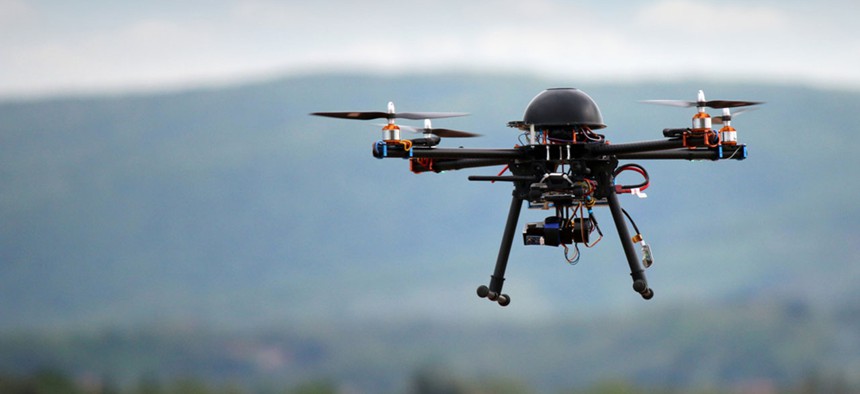FAA: Over Half a Million Drones Have Been Registered in Just Eight Months
There are already more registered drones than there have been planes.
At a conference at the White House Tuesday on the future uses of drones in US airspace, Federal Aviation Administration director Michael Huerta told the gathered crowd that more than consumer 500,000 drones had been registered with the agency since December.
At the end of last year, the FAA mandated—arguably as a stopgap against potentially stricter regulations from Congress about how citizens can use drones—that anyone wishing to fly a consumer drone weighing more than 0.5 lbs needed to get a registration number from the FAA for $5. While there was a roughly month-long grace period where the FAA was refunding people that registered, if the agency had collected its fee for every person that registered, it would’ve brought in over $2.5 million.
Huerta: More than 500,000 hobbyists have registered their #drones since December. https://t.co/xia9WmNmjt #flysafe pic.twitter.com/REdV3egpoG
— The FAA (@FAANews) August 2, 2016
According to the FAA, it took 100 years for about 320,000 regular aircraft to be registered with US officials—a feat that drones have surpassed in a matter of months. Granted, even the largest consumer drone is far smaller than the average plane, helicopter or hot-air balloon, but it’s an impressive statistic for an agency that has been criticized in the past for moving slowly on regulations that adapt to the growing uses for drones.
In June, the agency announced that its long-overdue regulations on commercial drones—how businesses can safely and legally operate them—would go into effect Aug. 29. Although the rules were comprehensive, they still outlawed the use of drones beyond the line of sight of the person flying them, meaning that a company—like Amazon, Alphabet, or Wal-Mart—that wants to operate a drone delivery service could not, unless they had their pilot walking along the ground alongside the drone, rendering the whole point of quick drone deliveries useless.
But at today’s conference, speakers discussed the potential for drone operations beyond the line of sight in the future. And the FAA is already testing out the feasibility of delivery services like this. Last month it approved a test by the drone delivery service Flirtey and 7-Eleven to deliver some snacks to a household in Arizona.
In the future, as the number of commercial and consumer drones continues to increase and our skies become filled with drones buzzing around for fun and work, a system will need to be in place to manage the massive influx of flying machines in US airspace. The FAA isworking with NASA to develop such a system, and today the White House committed to helping integrate drones into US airspace as quickly as possible. But at least in the time being, with a regulatory framework in place, more companies can begin to think about using drones in their business (about 5,000 companies have already started using them). It remains to be seen when they, or any regular consumer, will be able to fly them farther than they can see them.



